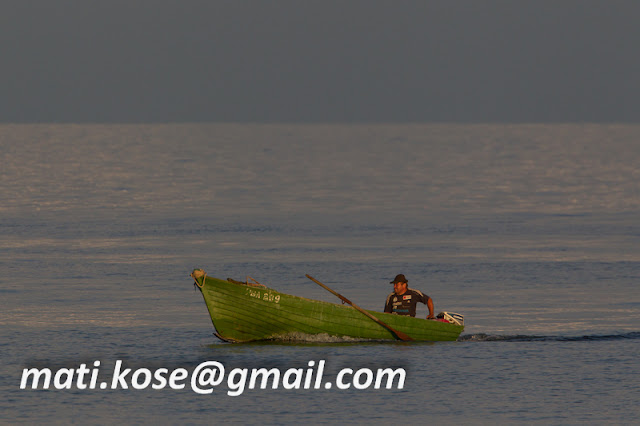Another stormy
day. Wind still reaches up 17 m/s. We have 3 birdwatchers at our base now -
Andrus Kuus, Mati Kose and me, so we try to cover different corners of the
island for early morning seawatching. And seems that every part of the island
is very different...
Andrus
stayed at our main observing point at the southern tip of the Kihnu Island. The
most common migrants (or more probably moving feeding flocks) here were today
Cormorants Phalacrocorax carbo - 105 ind.. Other more obvious migrants were -
Common Scoter Melanitta nigra - 44 and Starling Sturnus vulgaris - 30. New
daily record of the autumn season for the Greenshank Tringa nebularia - 17.
I spent 2,5
hours at the northeastern corner of the island. It seems to be rather good spot
for observing migrating waders. I encountered here 27 Wood Sandpipers Tringa
glareola, 2 Greenshanks Tringa nebularia and 5 Common Snipes Gallinago
gallinago. I observed here only very few Scoters and other seaducks. Beside
waders, 13 (2 flocks) Grey Herons Ardea cinerea headed to the northeast over
the sea.
Mati has
been seawatching at the western corner and it turned to be most interesting for
migration. The most numerous were Scoters with 350 individuals (+150 unidentified
seaducks). Other more numerous birds were was feeding flocks of Black-headed
Gulls Larus ridibundus (145) and Tern Sterna species with 125 individuals.
Both are hard to count here because of the local birds breeding on nearby
islets. Here even 27 Greenshanks Tringa nebularia were counted - but some of
them can be local birds as well because western coast is the main spot for
waders on stopover.
Beside
seawatching we got positive prove of successful breeding of Common Crane Grus
grus. One pair with one young has been feeding near the road. Young Crane was
already perfectly able to fly. At the same time, in the west coast the Common
Eider Somateria molissima mother suddenly appeared with just two late-timed ducklings. But better
the couple than nothing. It was both surprising to see the evidence that the
species also breed in the main island of Kihnu and how the young birds couple
with the rough sea. The real survival challenge at the very beginning!
 |
| The second year Little Gull in migration. The juvenile dark wingbars of primaries and coverts will be soon completely replaced by uniform silvery-grayish wing coverts |
 |
Splash proof or surfing for survival - The female Common Eider and two ducklings swimming through the stormy sea waves.
|

































